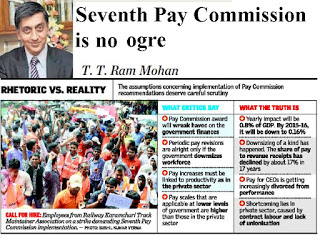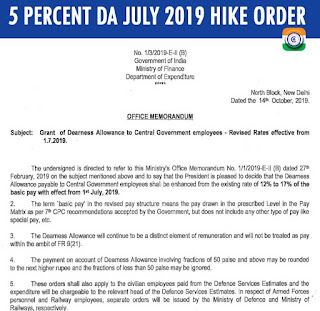Uniform Pension Scheme to retiring Railway employees at par with the ex-servicemen- reg.
No. IV/NPS/PFRDA BILL
Hon’ble Prime Minister of lndia,
South Block,
Raisina Hills,
New Delhi
Respected Sir,
Sub: Uniform Pension Scheme to retiring Railway employees at par with the ex-servicemen-reg.
At the outset, the National Federation of Indian Railwayemn (NFIR) thanks the Government for conceding to the demand of ex-servicemen for introduction of “One Rank – One pension” for them.
In this connection, Iwould invite your kind attention to the case of Railway employees numbering over 1.3 million as placed below:-
The Railway employees have been subjected to injustice as a result of introduction of New Pension Scheme (which is a contributory pension scheme) with effect from 01/01/2004. Consequently those employees who.joined railways on and after 01/01/2004 are governed by the contributory pension scheme with present nomenclature “New pension System” (NPS).
Presently, there are two sections of Rail Workforce – one governed by the Liberalized pensior Scheme (applicable to pre 0l/01/2004 appointees) and the other one governed by the contributory pension
scheme i.e. NPS applicable to post 0l/0l/2O04 appointees.
Since 2004, NFIR has been pressing the Government of lndia and the Ministry of Railways to withdraw New Pension Scheme as the duties and responsibilities of Railway employees are very complex, complicated and their working conditions are arduous as they perform duties at remote places extremist infested areas, jungle areas, without any supply chain. Vast percentage of Railway employees cannot afford to have timely medicines. social life, schooling facilities etc., Pursuant to the discussions held with the Railway Ministry on our pending demand seeking abolition of New Pension scheme in Railways, the then Railway Minister shri Mallikarjun Kharge had agreed with the demand and accordingly he had sent a communication to the Finance Minister on 29/03/2014 duly explaining the nature of duties of the Railway employees and seeking Government’s approval for exempting the Railway employees from the NPS whereby they can be governed by the Liberalized Pension Scheme. This issue is continued to remain unresolved.
For your kind appreciation. I mention here that according to the report of the Dr, Anil Kakodkar committee, submitted to the Railway Ministry in the year 2012. the death rate of Railway employees in the course of performing duties was much larger than the public. I quote below the figures given by the High Level Safety Review Committee headed by Dr. Kakodkar.
The above position reveals that the Railway employees killed during the period 2001 – 08 to 2011 were 1600 while those injured on duty were 8700. This figure would convince that the duties of Railway
employees cannot be treated as less arduous in comparison with the defence and para-military forces. Like armed forces, Railway employees are expected to remain at their place of ‘posting even during periodic rest and they cannot afford to leave the headquarters and they perform duties under open sky facing inclement weather conditions and ensure running of trains round the clock.
It would therefore, be necessary to exempt Railway employees from the New Pension System (NPS).
2. Need to provide Uniform Pension Scheme or One Rank – One Pension to Rail Workforce:
The Railway employees discharge their duties round the clock by shifts and over 85% staff work in remote places where no human life exists. Their duties are safety-oriented. They are facing continuous stress and strain in the course of performing Train passing duties causing health hazards leading to pre-mature death, medical invalidation at a scale larger than the armed/para-military forces. The demand for introduction of Uniform Pension Scheme to Railway employees of the same rank regardless of their date of retirement deserves consideration like that of retiring armed personnel.
I therefore, request you to kindly see that the Government accords approval, exempting Railway employees from the New Pension System for the purpose of covering them under the Liberalized Pension Scheme. I also request that “One Rank – One Pension” Scheme i.e. uniform pension for Railway employees retiring in the same rank regardless of their retirement may kindly be approved by the Government, considering the fact that Railway personnel are serving the nation, transporting military hardware and the army to the borders and ensuring uninterrupted movement of rail transport services at all times round the clock in all weather conditions.
NFIR
National Federation of Indian Railwaymen
3, CHELMSFORD ROAD, NEW DELHI – 110 055
National Federation of Indian Railwaymen
3, CHELMSFORD ROAD, NEW DELHI – 110 055
Affiliated to :
Indian National Trade Union Congress (INTUC)
lnternational Transport Workers Federation (ITF)
Indian National Trade Union Congress (INTUC)
lnternational Transport Workers Federation (ITF)
No. IV/NPS/PFRDA BILL
Dated: 06/09/2015
Shri Narendra Modi,Hon’ble Prime Minister of lndia,
South Block,
Raisina Hills,
New Delhi
Respected Sir,
Sub: Uniform Pension Scheme to retiring Railway employees at par with the ex-servicemen-reg.
At the outset, the National Federation of Indian Railwayemn (NFIR) thanks the Government for conceding to the demand of ex-servicemen for introduction of “One Rank – One pension” for them.
In this connection, Iwould invite your kind attention to the case of Railway employees numbering over 1.3 million as placed below:-
The Railway employees have been subjected to injustice as a result of introduction of New Pension Scheme (which is a contributory pension scheme) with effect from 01/01/2004. Consequently those employees who.joined railways on and after 01/01/2004 are governed by the contributory pension scheme with present nomenclature “New pension System” (NPS).
Presently, there are two sections of Rail Workforce – one governed by the Liberalized pensior Scheme (applicable to pre 0l/01/2004 appointees) and the other one governed by the contributory pension
scheme i.e. NPS applicable to post 0l/0l/2O04 appointees.
Since 2004, NFIR has been pressing the Government of lndia and the Ministry of Railways to withdraw New Pension Scheme as the duties and responsibilities of Railway employees are very complex, complicated and their working conditions are arduous as they perform duties at remote places extremist infested areas, jungle areas, without any supply chain. Vast percentage of Railway employees cannot afford to have timely medicines. social life, schooling facilities etc., Pursuant to the discussions held with the Railway Ministry on our pending demand seeking abolition of New Pension scheme in Railways, the then Railway Minister shri Mallikarjun Kharge had agreed with the demand and accordingly he had sent a communication to the Finance Minister on 29/03/2014 duly explaining the nature of duties of the Railway employees and seeking Government’s approval for exempting the Railway employees from the NPS whereby they can be governed by the Liberalized Pension Scheme. This issue is continued to remain unresolved.
For your kind appreciation. I mention here that according to the report of the Dr, Anil Kakodkar committee, submitted to the Railway Ministry in the year 2012. the death rate of Railway employees in the course of performing duties was much larger than the public. I quote below the figures given by the High Level Safety Review Committee headed by Dr. Kakodkar.
| Killed | Injured | |
| (a) Railway employees | 1600 | 8700 |
| (b) Passenger/Public | 1019 | 2110 |
| (c) Unmanned Level crossing | 723 | 690 |
The above position reveals that the Railway employees killed during the period 2001 – 08 to 2011 were 1600 while those injured on duty were 8700. This figure would convince that the duties of Railway
employees cannot be treated as less arduous in comparison with the defence and para-military forces. Like armed forces, Railway employees are expected to remain at their place of ‘posting even during periodic rest and they cannot afford to leave the headquarters and they perform duties under open sky facing inclement weather conditions and ensure running of trains round the clock.
It would therefore, be necessary to exempt Railway employees from the New Pension System (NPS).
2. Need to provide Uniform Pension Scheme or One Rank – One Pension to Rail Workforce:
The Railway employees discharge their duties round the clock by shifts and over 85% staff work in remote places where no human life exists. Their duties are safety-oriented. They are facing continuous stress and strain in the course of performing Train passing duties causing health hazards leading to pre-mature death, medical invalidation at a scale larger than the armed/para-military forces. The demand for introduction of Uniform Pension Scheme to Railway employees of the same rank regardless of their date of retirement deserves consideration like that of retiring armed personnel.
I therefore, request you to kindly see that the Government accords approval, exempting Railway employees from the New Pension System for the purpose of covering them under the Liberalized Pension Scheme. I also request that “One Rank – One Pension” Scheme i.e. uniform pension for Railway employees retiring in the same rank regardless of their retirement may kindly be approved by the Government, considering the fact that Railway personnel are serving the nation, transporting military hardware and the army to the borders and ensuring uninterrupted movement of rail transport services at all times round the clock in all weather conditions.
Yours faithfully,
(Dr. M.Raghavaiah)
General Secretary
https://drive.google.com/file/d/0B40Q65NF2_7UNzdMLTlpMmVXdEhFZjlDdzhCVnVGWmVUUUNZ/view?pli=1General Secretary













